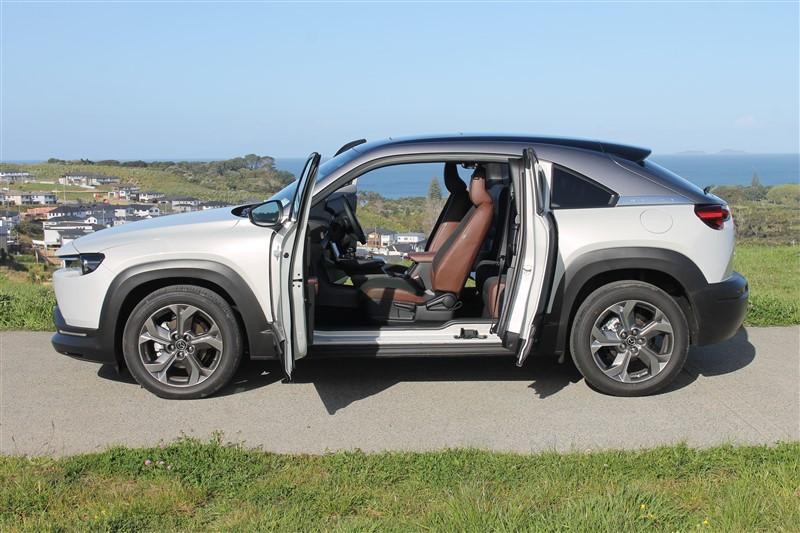Mazda has made its move into the electric vehicle space and has done so in typical brand fashion, with respectful revisits to its honourable history and commitment to its future success.
Just prior to the release of the MX-30, Mazda invited me to speak to the vehicle’s designers who were – at the time – gathering information on how an all-electric Mazda would fare in New Zealand.
I’m sure I was not the only one consulted, but that’s not the point. The point is that the Mazda man went back to Japan and – what felt like only a month or two later – the MX-30 created a ripple of electric anticipation as it grounded in this country.
The timing for this vehicle’s arrival bordered on the time it takes for current to pass from terminal a to terminal b in the automotive world at least, it was extremely fast from: ‘should we?’ to ‘here it is!’
And considering Mazda had to do what no other automaker has had to – work within the allowances of a self-imposed design paradigm; Skyactiv technology.
Skyactiv is Mazda’s signature body, chassis and vehicle dynamics package technology and is responsible for the brilliance that is part of every Mazda, which means it cannot be lost at the expense of alternative power sources.
Any electrification of a Mazda then, must embrace Skyactiv technology, which means more R&D is required for an electric vehicle to measure up to a conventionally powered Mazda.
Somehow, Mazda’s engineers managed to do this and still deliver the first ever electric Mazda in record-breaking time, but even then, Mazda added something a little extra…
The MX-30 has a singularly unique body design. It is still unmistakeably Mazda but features unique-to-MX-30 design cues both inside and out.
A casual glance would suggest a familial resemblance to the CX-30, which I suspect is deliberate, but the MX-30 is something new and characteristically different while being part of the family.
Drive-wise, the MX-30 electric is a little different from what we have come to expect of the typical Mazda. Not any better or worse, just… different.
Acceleration response time is as expected of an electric vehicle, quick and with alacrity and most engagingly experienced on twisting country roads.
This is where many electric vehicles tend to show any weakness in chassis design, but the MX-30 seems more at ease under flex or – where it is at its most efficient – in city and suburban environs.
For those who set store by internal design, the MX-30 provides more surprise and delight elements. The electric model comes to us in Takami grade, Mazda’s highest specification level.
As such, the variety of tactile surfaces are of the highest quality but, Mazda has added something new, something which is representative of the environmental sustainability of an electric vehicles and a hark back to Mazda’s history as a cork supplier, before it became an automotive manufacturer.
As such, cork highlights integrate with the soft touch leather, sophisticated cloths, and durable plastics to present an intriguing, ergonomically ingenious interior which is again, Mazda-familiar but avantgarde at the same time.
While the MX-30 has a good amount of boot space, there is a slight sacrifice in the rear passenger accommodations, which are really, only child-friendly for extended trips.
To access the rear cabin Mazda has reintroduced a company-favourite – the Freestyle or clamshell doors, hinged at the rear and which open outwards in the opposite direction to conventional doors.
This is a homage to the RX-8, which enjoyed the same unique cachet as the MX-30.
For the future of the automotive industry however, it looks like the MX-30 is will see much better prospects for itself and the Mazda brand moving forward.



